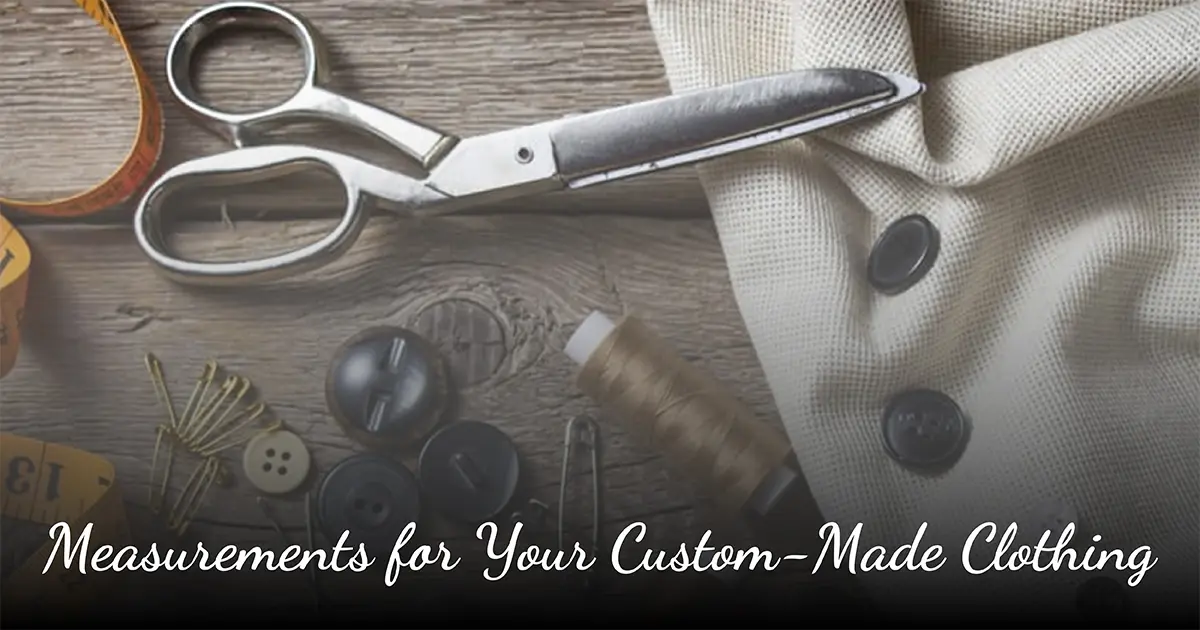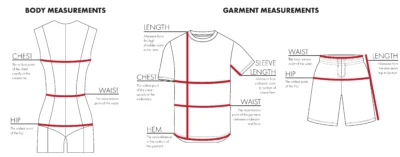In the realm of custom-made clothing, where each garment is meticulously crafted to fit the unique contours of its wearer, accuracy is paramount. A single misstep in the measurement process can spell the difference between a perfectly tailored masterpiece and a disappointing fit. To ensure that your custom-made clothing measurements are accurate and precise, it’s essential to approach the process with care, attention to detail, and a thorough understanding of the key principles involved. Here’s a comprehensive guide to mastering the art of precision in custom-made clothing sizing:
1. Start with the Basics:
Before diving into the measurement process, it’s crucial to familiarize yourself with the basic principles of garment construction and fit. Understand the key measurements typically required for different types of garments, such as shirts, suits, dresses, and trousers. Familiarize yourself with terms like chest, waist, hips, inseam, and sleeve length, as these will form the foundation of your measurements.
2. Invest in Quality Tools:
To achieve accurate measurements, you’ll need the right tools for the job. Invest in a high-quality measuring tape made of durable materials that won’t stretch or warp over time. Opt for a tape with clear markings and precise sizing in both inches and centimeters, ensuring versatility and accuracy in your measurements.
3. Take Precise Measurements:
When taking sizing for custom-made clothing, precision is key. Ensure that the measuring tape is snug but not tight, and always measure over the thinnest layer of clothing or directly against the skin for the most accurate results. Take each measurement multiple times to confirm consistency and accuracy, and record the measurements in a clear and organized manner to avoid confusion later on.
4. Follow a Standardized Measurement Guide:
To maintain consistency and accuracy across all measurements, it’s helpful to follow a standardized measurement guide or chart provided by your chosen custom-made clothing service. These guides typically outline the specific sizing required for each type of garment, along with detailed instructions on how to take each measurement correctly. Refer to the guide carefully and follow the instructions precisely to ensure uniformity and accuracy in your measurements.
5. Seek Professional Assistance:
If you’re unsure about how to take accurate sizing or if you’re dealing with complex garment designs that require precise measurements, don’t hesitate to seek professional assistance. Many custom-made clothing services offer in-person fittings or virtual consultations with experienced tailors who can guide you through the measurement process and ensure that your measurements are accurate and reliable.
Source: fecustom
6. Consider Your Posture and Body Shape:
When taking measurements, it’s essential to consider factors such as posture and body shape, as these can significantly impact the fit of the final garment. Stand naturally with relaxed shoulders and a straight back, and avoid sucking in your stomach or holding your breath, as this can distort your measurements. Be honest about any unique aspects of your body shape, such as a prominent stomach or sloping shoulders, as these will need to be accounted for in the final garment.
7. Double-Check and Confirm your Measurements:
Once you’ve taken all the necessary measurements, it’s crucial to double-check and confirm their accuracy before proceeding further. Review each measurement carefully, comparing it to the standardized measurement guide provided by your custom-made clothing service, and make any necessary adjustments or corrections as needed. It’s better to spend a little extra time double-checking your measurements now than to risk an ill-fitting garment later on.
8. Communicate Clearly with Your Tailor:
Effective communication with your chosen custom-made clothing service is essential to ensure that your measurements are accurately interpreted and translated into a perfectly fitting garment. Clearly communicate any specific fit preferences or concerns you may have, and be open to feedback and suggestions from your tailor. Provide detailed notes and instructions along with your measurements to help guide the tailoring process and ensure that your vision is realized.
9. Schedule a Fitting Session:
If possible, schedule a fitting session with your tailor before the final garment is completed to ensure that the fit is perfect. During the fitting, carefully assess the fit and comfort of the garment, noting any areas that may require further adjustments or alterations. Your tailor can make any necessary tweaks or modifications to ensure that the final garment fits you like a glove.
10. Maintain Accurate Records:
Finally, maintain accurate records of your measurements for future reference. Keep a detailed record of all measurements taken, along with any notes or instructions provided by your tailor. This will not only streamline the process for future orders but also ensure consistency and accuracy in your custom-made clothing sizing over time.
In Conclusion:
Achieving accurate sizing is the cornerstone of a successful custom-made clothing experience. By approaching the measurement process with care, attention to detail, and a commitment to precision, you can ensure that your custom-made garments fit you perfectly and reflect your unique style and preferences with unmatched accuracy and reliability.











